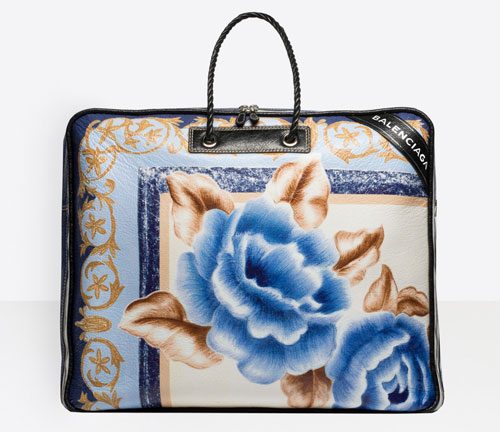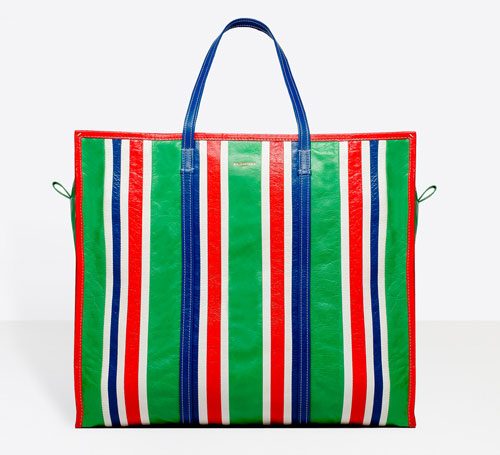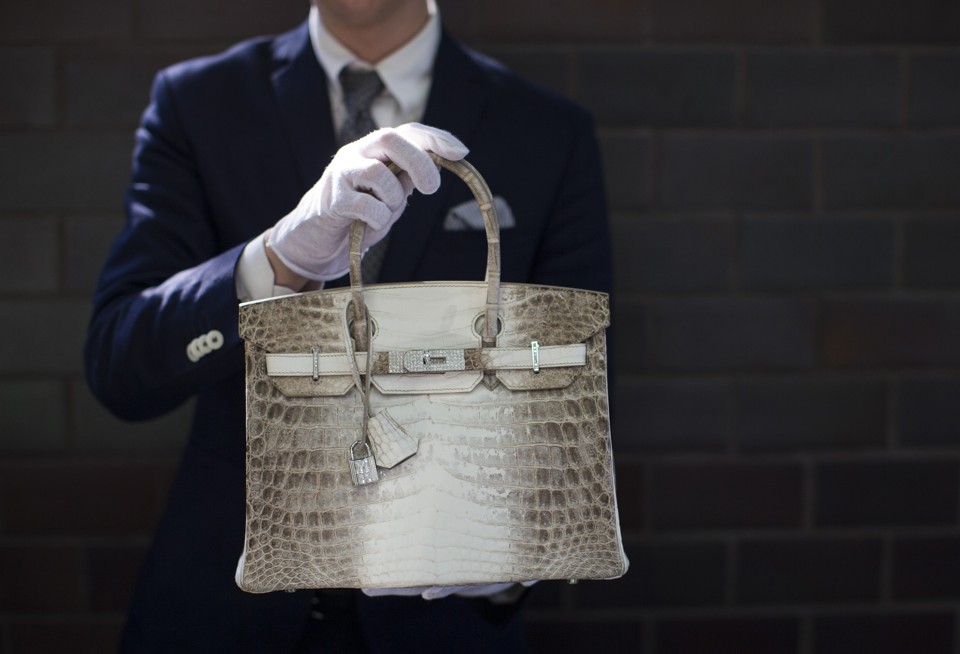PARIS —
Ian Rogers,
chief digital officer of LVMH Moët Hennessy Louis Vuitton, sat in his
sunlit office on Avenue Montaigne last month, alongside a large cactus
with a mélange of Pucci-pattern skateboards and black and white rock
band photographs arrayed on the walls behind him. Using a tattooed
finger, he punched in a pass code that would unlock access to “Babylon”:
the code name for the top secret project he has been working on since
his arrival 18 months ago at the world’s largest luxury group.
“We believe we are on the cusp of revealing something very exciting,” Mr. Rogers, 44, said in hushed tones.
The
“we” was the project’s 60 employees, many of whom have been hired from
the Paris technology sector and who are hidden far from the corporate
headquarters in new offices in the 15th Arrondissement. Mr. Rogers
rolled up the sleeves of his navy V-neck sweater and added, “I guess
it’s time to see if the customers think so, too.”
He
was referring to the imminent unveiling of LVMH’s high-stakes foray
into multibrand luxury e-commerce. Rumors of a shopping platform that
would fall under the branding umbrella of Le Bon Marché, LVMH’s upmarket
department store, have swirled for months. Now 24 Sèvres, a boutique
shopping website and mobile app named after the Paris street that Le Bon
Marché is on, goes live in under a month.
It
is a gamble that has divided many of the fashion industry’s power
players. On the one hand, 24 Sèvres will be yet another contender in an
already crowded sector, where established rivals such as Yoox
Net-a-Porter, FarFetch and MatchesFashion.com have
long been jostling for the world’s wealthiest consumers. Anticlimactic performances by more recent entrants like
Style.com,
Condé Nast’s multimillion-dollar digital boutique, indicated that even
the most reputable names in fashion can struggle when arriving late to
the game.
A successful entry by LVMH, however, could shake up everything.
Controlled by the French billionaire Bernard Arnault, the conglomerate owns 70 luxury brands, including
Christian Dior,
Louis Vuitton, Bulgari, Fendi and Givenchy. LVMH wields hefty firepower
thanks to its financial footing, a monopoly over so many labels
(including where and how they can be sold) and hundreds of bricks and
mortar stores worldwide.
“Le
Bon Marche is already a multibrand physical retailer; moving that store
online is a clear and natural next step,” said Luca Solca, a luxury
goods analyst with Exane BNP Paribas. “Of course, the natural advantage
for LVMH is that they can get so many brands to play ball straight away,
because the businesses belong to them. Easy, no?”
Not
so fast. LVMH has previously faltered in the multibrand luxury space.
The website eLuxury, closed in 2009, was a rare and high-profile
misstep. What makes the group think it can succeed now where it has
failed before?
“One word: Timing,” Mr. Rogers said.
Other people, though, might say that he is the answer.
Born
in Goshen, Ind., Mr. Rogers has a résumé rarely seen in haute luxury.
He is a computer science graduate and onetime roadie for the Beastie
Boys who first became a father at 17 (that daughter, now 26, is
finishing her Ph.D. in genetics in the United States).
He
spent the early part of his career as president of new media for the
band’s record label Grand Royal. (“I wouldn’t be anywhere without those
guys,” he said of the Beastie Boys, looking affectionately to their
picture up on the office wall).
Then
came a stint at digital music group Nullsoft, a period at the helm of
Yahoo Music and later the position of chief executive of Beats Music,
which he held during its
$3 billion takeover by Apple in 2014 before becoming head of iTunes Radio.
But,
he said: “I was ready to move on from music because it felt like a
solved problem. The main players are now established. The space has gone
from science fiction to mainstream, from an industry in denial to an
industry in free-fall to an industry in growth.
“And
I just had this feeling about retail, that it would be the next
frontier to really change, where the real winners are yet to be
determined. Then LVMH approached me with this opportunity. And I
realized if I really believed that, there could be no place better to
go.”
Since
his arrival in Paris from California, where he lived for 20 years, Mr.
Rogers has made steps to adapt to life in the French capital. He takes
his 10-year-old daughter climbing at the MurMur Escalade, and has
sampled as many great restaurants as possible, citing Miznon, Le 21 and
Le Bon Georges as highlights. He has skated the mini-ramp at République,
done graffiti at the Bercy skatepark and trained for numerous
marathons. Of his work at the company, Bernard Arnault has been
“incredibly supportive,” Mr. Rogers said. He added that Mr. Arnault’s
digitally attuned son,
Alexandre, 25, had been his “key ally.”
“A
lot of the stuff we’ve been working on, I just wouldn’t have been able
to do without Alex,” Mr. Rogers said, emphasizing that his
responsibilities extend far beyond the introduction of 24 Sèvres, where
day-to-day operations are run by its chief executive, Eric Goguey. He
also oversees the LVMH brands’ e-commerce strategies, customer data
management upgrades, the building of the online wholesale business in
perfumes and spirits and LVMH’s China digital strategy.
“There
is a lot on our plate right now,” Mr. Rogers said. “And Alex, outside
of his full-time day job, is very switched on as to where this business
needs to go.” The younger Mr. Arnault is the chief executive of Rimowa, a
luggage brand owned by LVMH.
Still,
there is no question that this e-commerce endeavor is extensive and
eagerly anticipated. Mr. Rogers said LVMH had considered every branding
possibility for 24 Sèvres, which will initially stock only woman’s wear,
but settled on maintaining a connection to Le Bon Marché because of its
160-year history as a pioneer in catalog sales.
“I
find it interesting that the Parisian perspective on fashion has been
missing from the e-commerce landscape until now,” he said. “In my view
it is a conspicuous absence and a huge market gap that we intend to
fill.” He declined to reveal the exact cost of this investment for LVMH
to date other than to say that it was relatively “modest — a
brick-by-brick, start-up style approach.” He added that 24 Sèvres is
also the name of the current loyalty program run by the department
store, with legions of existing members. That program will also now be
shared with users of the website and app.
In
many ways 24 Sèvres shares characteristics with its more established
rivals, including fast delivery times to scores of international
locations; chatbots or stylists-on-demand; glossy packaging, complete
with Eiffel Tower cutout pop-ups and love notes from Paris; and an
efficient checkout process. Luxury e-commerce has become about the price
of the consumer’s time, Mr. Rogers said, leading to an increasingly
competitive field in terms of service across the retail spectrum. But
there are differences, too.
“The
move toward social media platforms like Instagram and Snapchat comes
hand-in-hand with the rise of the internet as a more visual medium and
of mobile domination,” Mr. Rogers said, his hand on “Louis Vuitton
Windows,” a suitcase-size Assouline tome by the Louis Vuitton visual
image director, Faye McLeod, that sits as a touchstone in the middle of
his office (Ms. McLeod has been heavily involved in the creative
direction of 24 Sèvres). “Increasingly consumers want pictures over
words,” he said. As a result, he added, “if you look at our site, we
lean far further toward visually-led merchandising than the more
editorial skew of our competitors.”
Tiny
exquisite illustrations by Hadrien Durand-Baïssas and colorful
tongue-in-cheek GIFs are scattered throughout the site. Each product
category header is a monochrome photograph of artists’ models contorted
into various sculptural shapes, a quiet nod to LVMH’s dizzying array of
cultural efforts.
Yet of the 150 brands initially on 24 Sèvres, only around 20 to 30 will
be LVMH owned (that will include Louis Vuitton and Dior, neither of
which are available via any other multibrand online boutique). In the
case of LVMH-owned businesses, it will be possible to source inventory
from across those brands’ independent retail networks. For non-LVMH
labels, inventory with either be acquired wholesale or controlled by
those brands that operate their own shop-in-shop style retail channel,
the same model operated by the store.
“Don’t
think of this as the LVMH e-commerce project; think of this as us
taking Le Bon Marché international via the internet,” Mr. Rogers said,
playing down expectations for the first step of an overhaul of the
group’s approach to reaching customer. The initial success of the
project will be measured by sales, although he emphasized that LVMH is a
group that consistently takes a long-term view.
“Where
I am from, people always said to me, ‘You’re late,’” he said. “It’s
already too crowded a space. But with Beats, we showed them they were
wrong. I’ve walked that path before. I see that path here again.”
Plenty
will be watching that journey closely, from established multibrand
luxury rivals like Yoox Net-a-Porter and FarFetch, to technology
platforms like Amazon, which has long expressed its clear intention
to dominate the online fashion market, though with a limited degree of success to date.
“We
actually currently have more Vuitton stores in the U.S. than Amazon
does distribution points, which is great,” Mr. Rogers said. “In context,
it means that hypothetically we could have as much logistics capacity
in the U.S. as Amazon does. And as for our rivals, well, it is a big
sky. There is still plenty of room for growth for all the players.”
Referring
to eLuxury, he added: “We don’t want to be early adopters. We have been
before and we paid the price for that. And when it comes to the
internet specifically, there isn’t necessarily a reward for being first.
There is, however, currently a major focus on omnichannel and
experience, and we are moving from a mass culture to a mass of niches.
If there’s quality in what you do, you’re not threatened. Timing-wise,
this is exactly where LVMH wants to be.”
https://www.nytimes.com/2017/05/10/fashion/lvmh-ian-rogers-24-sevres-takes-on-amazon.html










